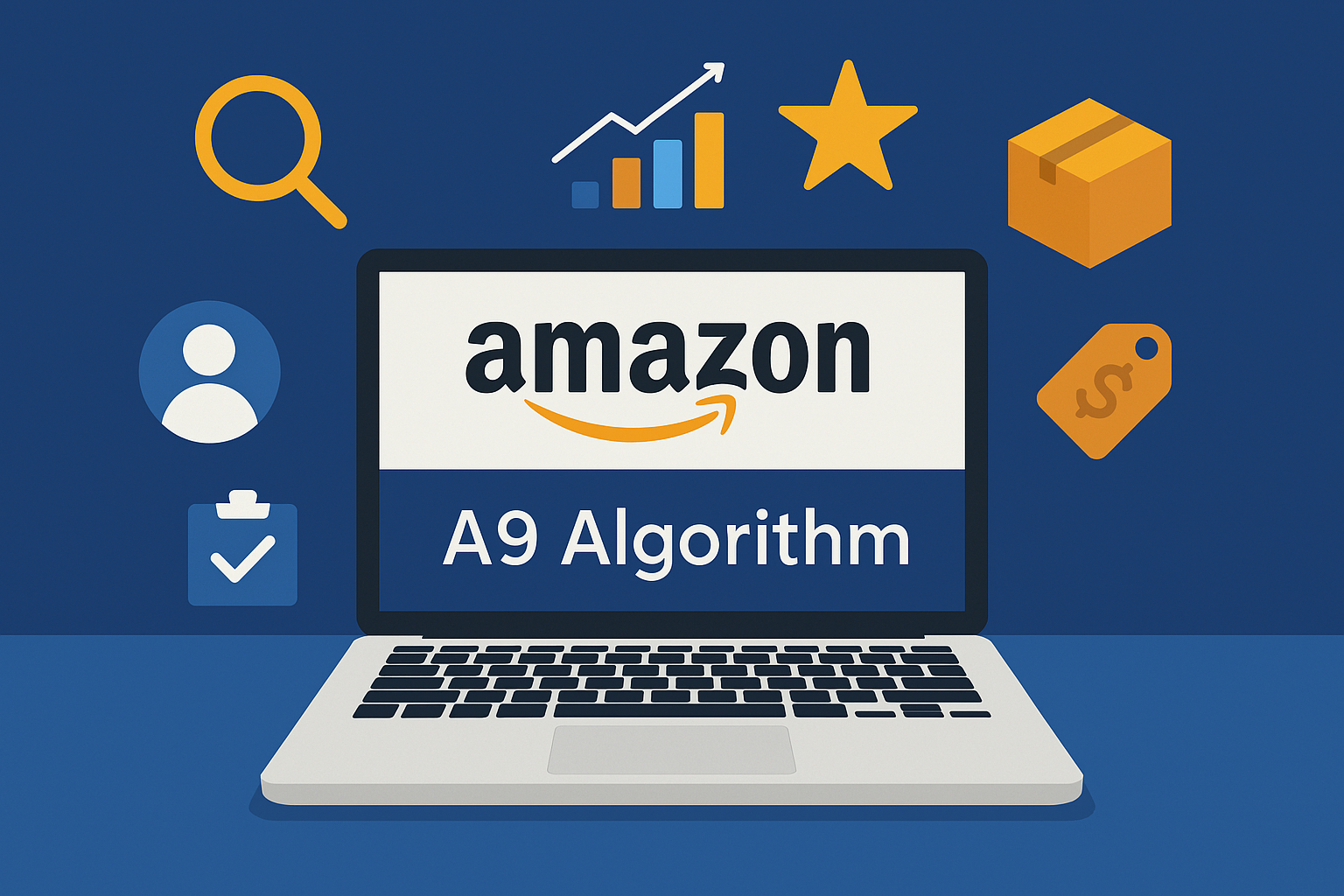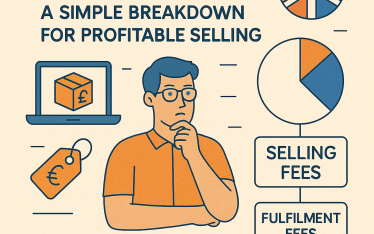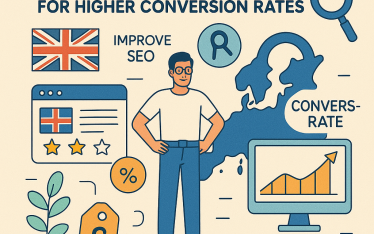TL;DR
- Amazon’s A9 algorithm decides which products show up in search results based on keywords, sales, reviews, price, and relevance.
- If your listings aren’t optimized for A9, your visibility and sales will suffer, no matter how good your product is.
- SEO agencies help by doing keyword research, optimizing listings, improving images, and boosting conversion rates through pricing and reviews.
- They also drive traffic with Amazon ads and external channels while tracking performance to make data-driven updates.
- Common seller mistakes include poor keywords, low-quality images, pricing issues, and not updating listings regularly.
- Avoid these mistakes by using the right keywords, keeping inventory stocked, pricing competitively, and continuously optimizing your listing.
Struggling to get your products seen on Amazon, even after listing them properly? You’re not alone. Many sellers face the same problem: great products with low visibility and poor sales. The reason? Their listings aren’t ranking well in Amazon’s search results, and that all comes down to the Amazon A9 algorithm.
A9 is the engine behind Amazon’s search. It decides which products appear on page one and which get buried. It looks at factors like keywords, listing quality, pricing, reviews, and sales performance. If your listing isn’t optimized for A9, you’re missing out on valuable traffic and conversions. From keyword research to listing optimization and performance tracking, they fine-tune every element to improve your visibility and drive more sales.
In this blog, we’ll take a closer look at how Amazon’s A9 algorithm works, what it looks for, how it ranks products, and why some listings show up on page one while others get buried. We’ll explain the key ranking factors that influence your product’s visibility, like keywords, pricing, reviews, and conversion rates.
What is the Amazon A9 algorithm?
The Amazon A9 algorithm is the search engine behind Amazon’s product search results. It decides which products appear when a shopper types in a keyword, and in what order they’re shown. Think of it like Google’s search engine but built specifically for buying and selling products.
A9’s main goal is to show customers the most relevant and high-performing products based on what they’re searching for. It looks at factors like keyword relevance, sales history, product price, customer reviews, and how well your listing converts clicks into purchases.
Unlike traditional search engines that focus on content alone, A9 is focused on selling. If your product consistently sells well, gets positive feedback, and is priced competitively, A9 will reward it with better placement in search results. For sellers, understanding A9 is key to getting discovered. Amazon listing optimization helps increase visibility, drive more traffic, and ultimately grow your sales on Amazon.
How does the A9 algorithm rank products?
The Amazon A9 algorithm ranks products based on one main goal: showing shoppers the items they’re most likely to buy. When someone types a keyword into the Amazon search bar, A9 quickly decides which products to display and in what order. It does this by analyzing several important factors that reflect both relevance and performance.
- Keyword relevance
A9 checks if your product listing includes the Amazon keyword research that matches the customer’s search. Amazon product title optimization, bullet points, descriptions, and backend search terms all play a role. If your listing doesn’t include relevant Amazon keyword research, it likely won’t show up in search results.
- Sales performance
The algorithm looks at how well your product has sold in the past. If your listing has a strong sales history and good conversion rates (clicks that turn into purchases), A9 sees it as trustworthy and ranks it higher.
- Price and availability
Keeping your product competitively priced and in stock helps improve your ranking on Amazon. Shoppers are more likely to buy items that offer good value and are available for fast delivery. Amazon favors listings that meet these criteria, often placing them higher in search results to drive more visibility and sales. - Customer experience
Customer reviews, star ratings, and shipping speed all play a key role in how well your product performs on Amazon. Listings with positive feedback and fast, reliable delivery are seen as more trustworthy by shoppers and Amazon’s algorithm, which helps improve visibility and increases the chances of higher sales.
Key ranking factors you should know
To rank higher in Amazon search results, you need to understand the key factors the A9 algorithm looks at. These factors help Amazon decide which products are most relevant and most likely to sell.
- Keyword relevance: It is one of the most important. Your product title, bullet points, description, and backend keywords should all include relevant search terms that customers are likely to use.
- Sales history and conversion rate: Products that have strong sales and turn clicks into purchases are rewarded with higher rankings. Amazon wants to show products that shoppers are more likely to buy.
- Pricing and availability: Competitive pricing and keeping your items in stock help maintain your listing’s visibility.
- Reviews and fulfillment methods: This method influences ranking. Positive customer feedback and using Fulfillment by Amazon (FBA) can give your listings an edge.
Together, these factors help improve your visibility and increase your chances of making sales.
Why does SEO matter on Amazon?
SEO (Search Engine Optimization) matters on Amazon because visibility drives sales. When customers search for a product, they rarely scroll past the first page of results. If your product doesn’t appear there, chances are it won’t be seen, no matter how good it is.
Unlike Google, Amazon is a shopping search engine, and its main goal is to show products that are most likely to sell. That’s why optimizing your listings with the right keywords, clear content, and competitive pricing is critical. SEO helps Amazon’s A9 algorithm understand what your product is and when it should be shown to shoppers.
Good Amazon SEO improves your ranking in search results, increases traffic to your listings, and boosts your conversion rate. It also helps you stay ahead of competitors who may be offering similar products. From titles and bullet points to backend keywords and images, every part of your listing contributes to Amazon SEO ranking. The better optimized your listing is, the more likely it is to be seen, clicked, and purchased.
In short, SEO isn’t just a bonus on Amazon, it’s a must. Without it, your product may never reach the shoppers who are already looking for what you sell.
How SEO agencies help improve product rankings
Improving Amazon product ranking takes more than just uploading a listing and hoping for the best. With increasing competition, your listings need to be well-optimized, engaging, and performance-driven to stand out. That’s where Amazon SEO agencies come in. These experts understand how the A9 algorithm works and know exactly what it takes to boost your visibility and rankings. Here’s how they help:
#1 Keyword research and optimization
SEO agencies start by identifying the most relevant and high-converting keywords for your product. They use advanced tools and competitor analysis to find the search terms your target customers are using. Then, they strategically place these keywords in your product title, bullet points, backend search terms, and description to make your listing more discoverable.
#2 Listing optimization (titles, bullets, and descriptions)
Your product listing needs to be clear, keyword-rich, and easy to read. Amazon SEO services craft compelling titles that follow Amazon’s character limits and guidelines, write bullet points that highlight key features and benefits, and create descriptions that inform and persuade shoppers. The goal is to improve both search relevance and conversion rates.
#3 Image and content optimization
Images are just as important as text on Amazon. Agencies help improve your product visuals by following Amazon’s image guidelines and enhancing them with lifestyle shots, infographics, and comparison images. They may also assist with Amazon A+ Content or Enhanced Brand Content, which gives your listing a more branded and engaging look.
#4 Boosting conversions through reviews and pricing
Conversion rate is a key factor in Amazon’s A9 algorithm. Agencies help improve this by guiding review strategies (within Amazon’s terms), helping you respond to negative feedback, and advising on pricing strategies. Competitive pricing and a healthy number of positive reviews can dramatically improve your listing’s conversion performance.
#5 Driving traffic with ads and external sources
SEO isn’t just about organic rankings. Agencies also run Sponsored Product ads, Sponsored Brand campaigns, and even off-Amazon traffic strategies (like social media or Google Ads) to drive more traffic to your listings. Increased traffic, when combined with a strong listing, can lead to higher conversions and better rankings.
#6 Tracking performance and making data-driven updates
What gets measured gets improved. Agencies monitor your listing’s performance, such as impressions, click-through rates (CTR), and conversion rates regularly. They use this data to make smart updates, run A/B tests, and continuously improve your product’s visibility and effectiveness.
Common mistakes sellers make with A9
- Using the wrong keywords: Not adding the right keywords or adding too many unrelated ones can hurt your product’s visibility.
- Bad product titles and descriptions: Titles that are too short, too long, or unclear make it hard for A9 (and customers) to understand your product.
- Poor images: Low-quality or missing Amazon product photography or images can lead to fewer clicks and lower sales.
- Running out of stock often: If your product keeps going out of stock, Amazon may stop showing it in search results.
- Skipping backend keywords: Many sellers forget to fill in backend search terms, which help Amazon find your product.
- Uncompetitive pricing: Pricing too high or too low without a clear strategy can hurt your chances of selling.
- Not enough good reviews: Listings with few or negative reviews often rank lower.
- Not tracking performance: If you don’t check how your listing is doing, you won’t know what to improve.
- Never updating the listing: Leaving your listing untouched for too long can cause it to fall behind competitors.
Wrapping up
Ranking well on Amazon isn’t just about having a great product, it’s about making sure your listing is optimized for how Amazon’s A9 algorithm works. From keyword relevance and sales performance to pricing and reviews, every detail matters. If your product isn’t showing up in search results, you’re missing out on valuable traffic and sales.
That’s where SEO agencies and Amazon experts come in. They take the guesswork out of optimization by improving your keywords, listings, images, and ad strategy so your product performs better and ranks higher. With the right support, you can boost your visibility, increase conversions, and stay ahead of the competition.
At eStore Factory, our Amazon experts specialize in A9-focused SEO and listing optimization. Whether you’re just getting started or looking to scale, we help you grow your brand with proven strategies that align with Amazon’s algorithm.
Ready to improve your rankings and drive more sales? Contact us today!







